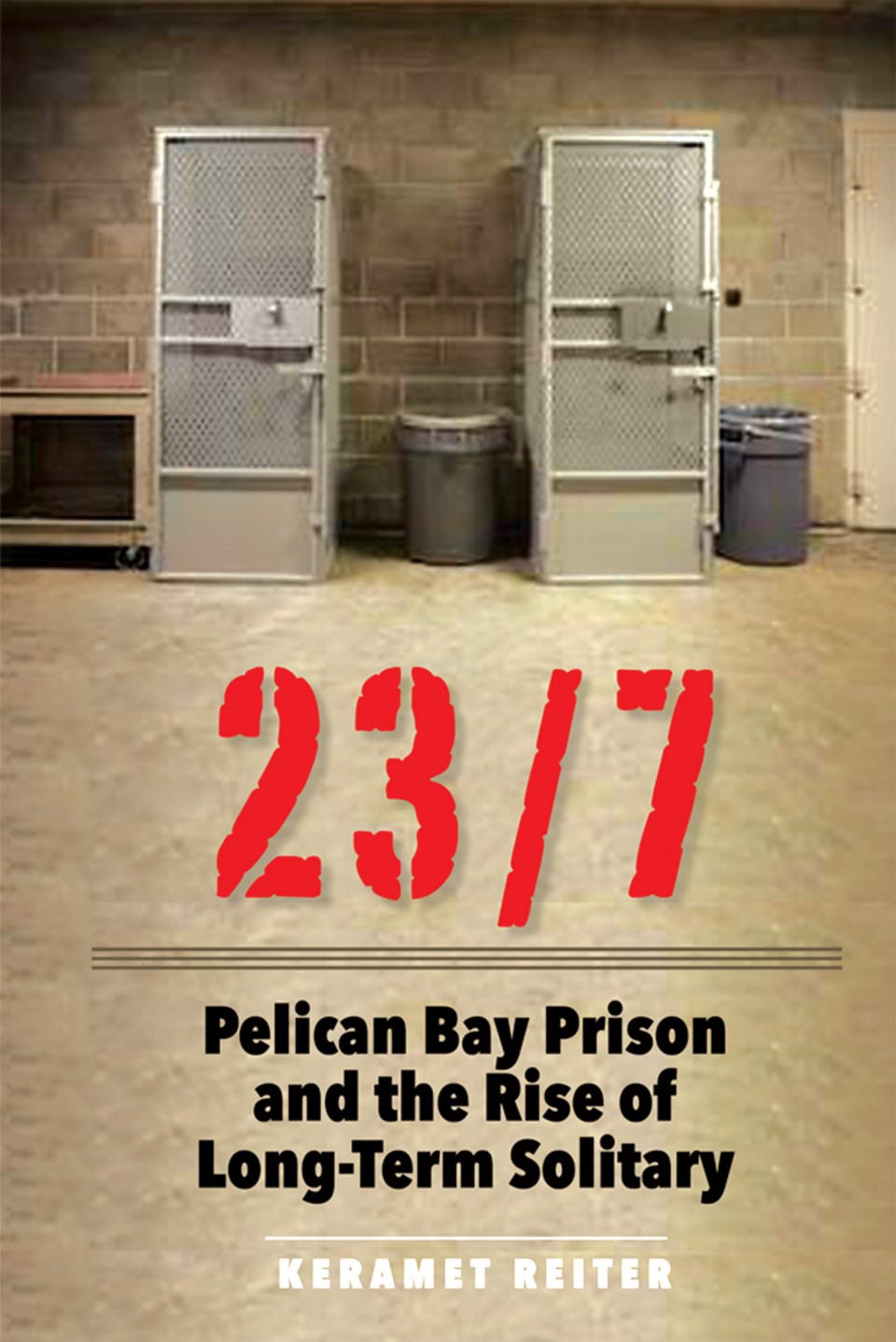A new book teaches the alarming lesson that all attempts at reforming solitary confinement have merely enabled the practice to continue.
By Peter C. Baker
Pelican Bay State Prison. (Photo: Jelson25/Wikimedia Commons)
At last, mainstream America seems to be talking about solitary confinement. Over the last decade, journalists and politicians have, more than ever before, discussed the perils of the practice: how enforced isolation damages the mind, how quickly it incites and exacerbates mental illness, how frequently it encourages self-mutilation and suicide — and how disproportionately it is used for non-white prisoners. Pope Francis condemned the practice. President Barack Obama pointedly questioned its utility. The federal government banned its use for juveniles in federal prisons.
Most dramatically, 30,000 inmates in California prisons went on a well-publicized hunger strike, starving themselves to protest not only the soul-destroying effects of long-term stays in Segregated Housing Units, but also the circular logic that often determined who ended up there. In a 2013 class-action settlement, the California strikers won what appeared to be a set of stunning concessions. Thousands of people were cleared for release from SHUs, many of whom had been held there for decades; statewide, future SHU stays were capped at five years.
In the years since, numerous other states have made similar reforms, either in response to lawsuits or as preemptive moves. Headlines suggest that we are witnessing the “beginning of the end” of solitary confinement, propelled by a new consensus that it is inhumane and unproductive. Unfortunately, there are good reasons to be skeptical.
In her debut book, 23/7, the scholar of prisons Keramet Reiter zooms in on the influential history of the Pelican Bay State Prison SHU: a standalone, 1,056-cell, long-term solitary facility in Northern California that opened in 1989 to house, according to prison administrators, “the worst of the worst.” (The prison was a hub in the recent hunger strikes; it also provided the template for Camp Delta, the military prison in Guantanamo Bay.) Reiter does a decent job evoking the mind-warping hell of SHU isolation, and she unearths important new data to puncture the claim that the SHU is used only to isolate the most dangerous individuals. Her most important contribution, though, is her close attention to the tragic shortcomings of attempts to date at reforming the facility.

A version of this story first appeared in the
of Pacific Standard.
.
The recent hunger strikes, Reiter reminds us, were hardly the first “major win” for solitary’s critics. But with the benefit of hindsight, we can see that, too often, what looked like victory at the time turned out to be something more ambiguous. Rather than signaling the beginning of the end for radical forced isolation, these episodes instead functioned to ensure the practice would continue.
The central example is Madrid v. Gomez, a widely cited 1995 California district court ruling that, at the time, liberals in favor of prison reform greeted as a landmark victory. Shortly after the Pelican Bay SHU opened, Judge Thelton Henderson — long recognized as one of the most liberal judges in the country — started receiving handwritten notes from its inmates alerting him to the terrible conditions there. At the time, very few people who did not work or live at Pelican Bay had any idea of what went on inside its walls. Henderson insisted on his judicial right to visit; while he was there, guards intentionally set a riot in motion, hoping to show Henderson how chronically unruly the population was.
Henderson initiated a case on behalf of the prisoners and, in his forcefully written decision, declared several aspects of the Pelican Bay SHU flatly unconstitutional: the wildly excessive use of force by guards (in one infamous example, guards had intentionally cooked off chunks of an individual’s skin by immersing him in scalding water); the almost complete absence of medical care; and the housing of people with pre-existing mental conditions. (During the trial, it was determined that a large percentage of SHU inmates were mentally ill; one-third were acutely psychotic.)
But Henderson didn’t rule on the constitutionality — on the fundamental cruelty — of long-term isolation itself. So, while Madrid v. Gomez did curtail certain extremely visible modes of brutality, the SHU itself had now survived a lawsuit. It is no coincidence that, in the decade after the ruling, the number of long-term solitary units nationwide tripled. Yes, guards in these units are now forbidden from flagrantly abusing the prisoners (though they still frequently do). Yes, these units have become less awful-looking — less dirty and moldy — to outside observers. But they are still perfectly designed to elicit the exact experience that solitary’s victims have persistently identified as its most unbearable aspect: the extreme lack of contact and erasure of context that psychologists and philosophers refer to as “social death.”
The more recent story of the California hunger strikes, which involved alliances that transcended race and gang affiliations, is undoubtedly inspiring. Is it a good thing that people can no longer be held in solitary indefinitely? Yes. But the specter of Madrid should inspire caution. Five years in solitary is, in some obvious sense, “better” than 10 or 20. It is also more than long enough to send a person careening toward mental instability and social death.

23/7: Pelican Bay Prison and the Rise of Long-Term Solitary. (Photo: Yale University Press)
Just as worrying, by the end of April 2015, the overall SHU population statewide was 3,654, just 269 short of the pre-strike total in 2013. People were being sent there almost as quickly as they were being removed.
Thanks to the murkiness of our prison systems, it is difficult to know how many people are being held in solitary nationwide at any given time. By most tallies, it is more than 50,000 but less than 100,000. Just as important is the truth it reveals about our prison system: that beneath its rhetoric about rehabilitation and justice lurks a strong desire for punishments that, while leaving their victims technically alive, strip them, day by day, of all that makes them human.
This impulse’s roots run deep — so deep that most attempts at uprooting them have instead merely re-routed their growth. Reiter traces the hyper-proliferation of long-term solitary to a few intertwined trends, including the tumult of the civil rights era, the law-and-order backlash it inspired, and the resulting prison crowding and prison riots of the 1970s and ’80s. (Reiter also stresses the importance of the widespread shuttering of state-funded psychiatric hospitals.) All true — but 23/7 could have usefully followed these roots further down in the American soil, at least gesturing toward their relationship to slavery, our great national institution of blunt dehumanization.
Is this the beginning of the end for solitary? It’s tempting to think so, especially if you’re hungry for evidence that nightmares of American cruelty can be corrected through existing channels. Reiter doesn’t rule on this question. What she gives us is a reminder that this life-destroying impulse, whatever its ultimate origins, is a strong and slippery thing. Rather than assume its inevitable defeat, best to watch carefully for where it surfaces next.





